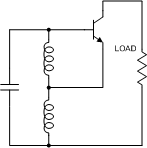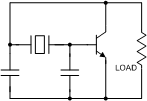 All RF Cafe Quizzes make great fodder for
employment interviews for technicians or engineers - particularly those who are
fresh out of school or are relatively new to the work world. Come to think of it,
they would make equally excellent study material for the same persons who are going
to be interviewed for a job. Bonne chance, Viel Glück, がんばろう,
buena suerte, удачи, in bocca al lupo, 행운을 빕니다,
ádh mór, בהצלחה, lykke til, 祝你好運.
Well, you know what I mean: Good luck! All RF Cafe Quizzes make great fodder for
employment interviews for technicians or engineers - particularly those who are
fresh out of school or are relatively new to the work world. Come to think of it,
they would make equally excellent study material for the same persons who are going
to be interviewed for a job. Bonne chance, Viel Glück, がんばろう,
buena suerte, удачи, in bocca al lupo, 행운을 빕니다,
ádh mór, בהצלחה, lykke til, 祝你好運.
Well, you know what I mean: Good luck!
Click here for the complete list of
RF Cafe Quizzes.
Note: Some material based on books have quoted passages.
1. Who from this list is usually credited with being the first to experiment with high frequency oscillator
circuits?
a) Benjamin Franklin b) Nikola Tesla c) Edwin Armstrong d) Albert Einstein 2. In the
four basic oscillator circuits shown below, what is the primary function of the transistor? a) Frequency
control
b) Amplitude control c) Compensation for tank circuit losses d) Isolation

 3.
Which type of oscillator circuit is shown to the right? 3.
Which type of oscillator circuit is shown to the right? a) Colpitts oscillator b) Clapp oscillator c)
Hartley oscillator d) Pierce oscillator
 4.
Which type of oscillator circuit is shown to the right? 4.
Which type of oscillator circuit is shown to the right? a) Colpitts oscillator b) Clapp oscillator c)
Hartley oscillator d) Pierce oscillator
 5.
Which type of oscillator circuit is shown to the right? 5.
Which type of oscillator circuit is shown to the right? a) Colpitts oscillator b) Clapp oscillator c)
Hartley oscillator d) Pierce oscillator 6. Which type of oscillator circuit is
shown to the right? a) Colpitts oscillator b) Clapp oscillator c) Hartley oscillator d) Pierce
oscillator
7. Which factor is most important in maintaining spectral purity in an oscillator circuit? a)
Overall circuit Q (quality factor) b) Component sizes c) Q of individual components d) Transistor gain
8. What does the term "frequency pulling" refer to? a) Change in frequency due to power supply
variations b) Change in frequency due to load variations c) Change in frequency due to thermal variation
d) All the above 9. In a phase-locked loop (PLL) oscillator circuit, what does the phase detector
do?
a) Detects phase b) Compares relative phase between the reference input and oscillator output and
introduces a shift as necessary to maintain phase coherence c) Injects random phase shifts at the input
to stabilize the output frequency d) Phase detectors are not used in PLL circuits 10. Complete
the following adage used in the days before computer simulators. "If you want an oscillator, design an amplifier.
If you want an amplifier, design a(n) ____." a) Amplifier b) Filter c) Oscillator d) Radio
Need some help? Click
here for the answers and explanations.
|










 3.
Which type of oscillator circuit is shown to the right?
3.
Which type of oscillator circuit is shown to the right? 4.
Which type of oscillator circuit is shown to the right?
4.
Which type of oscillator circuit is shown to the right? 5.
Which type of oscillator circuit is shown to the right?
5.
Which type of oscillator circuit is shown to the right?